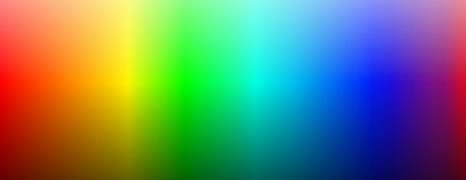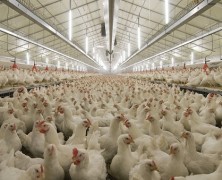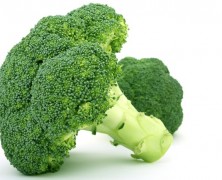LEDs are more energy efficient. LEDs last longer. These claims are becoming more and more prevalent, and rightfully so. But this breakthrough light source represents another tremendous advantage, one that is far less well known: the LED color spectrum. The “white” visible light emitted naturally by both the sun and artificial light sources is actually composed of a range of colors. These various colors can be viewed when the light is refracted through a dispersive prism. The different colors of light represent different wavelength frequencies — the typical human eye can perceive wavelengths from about 390 to 700 nm. While sunlight is composed of the richest compilation of color (within it you will see all the colors of the rainbow), many other forms of artificial “white” light are missing wide swaths of the color spectrum. Looking at the color distribution of incandescent (top) and CFLs (bottom) in the charts below, we see that there are large sections of the full spectrum missing from each of these forms of white light. In incandescents, the lower wavelengths of blue, green all the way to yellow are found at a greatly diminished value. In CFLs, on the other hand, the apparent white light is something like a visual trick, composing narrow bands of violet, blue, green and orange color frequencies to trick our brains into thinking we’re seeing white light. Below is the color spectrum found in LEDs. Notice how the LED color spectrum is heavier on the blues, and claims a more even distribution than CFLs or red heavy incandescents. The reason for this is that many LEDs are run using more efficient blue chips which shines through a phosphor coating that turn the light white. So what’s the difference between the LED color spectrum and the spectrum found in other artificial light sources? The main difference is that the LED spectrum is closer to natural daylight than incandescents, which more closely resemble sunset light, or CFLs, which are composed of narrow bands of light. The color spectrum of LED lights signal to our body’s internal circadian rhythm, a critical player in cognition and mood, that we are in a daylight situation. This makes us feel more alert, in addition to helping fight symptoms of depression. In contrast, incandescents, heavy on the red spectrum, can actually decrease alertness and increase fatigue. Interestingly, the LED color spectrum has also proven beneficial in poultry LED lighting. Chickens raised under LED lights were found to respond positively to the LED color spectrum, which enhanced growth rates while reducing food costs and increasing the amount of eggs per chicken. Furthermore, the LED color spectrum has led to great results for indoor gardeners and horticulturists. Up until now, we have only covered one way to make white LED light — a blue LED light shone through phosphor. Another method is known as RGB, which blends red, green and blue LEDs together into white. While a less developed technology than phosphor-based white LEDs, RGB-based LEDs have the advantage of increasing the dynamism of the LED color spectrum. By using remote-controlled color-changing RGBs, the LED color spectrum can be adjusted to change at different times of the day or for various situations at home or work. Any Questions? Inspired to learn more about LED lights? We’d love to lend a hand and discuss LED strip lighting possibilities whenever you’re ready. Contact: Phone: 1-844-FLEXFIRE (1-844-353-9347) Email: info@flexfireleds.com Website: flexfireleds.com ...
The Benefits Of Poultry LED Lighting...
posted by Flexfire LEDs
Chickens raised using an intelligent poultry LED lighting system have been found to produce higher quantity and quality of eggs, develop into maturity at a faster rate and enjoy an improved standard of health as compared to chickens raised under traditional light sources. Using LED-based technology chicken farmers can: Lower lighting costs Increase musculoskeletal development and weight gain Induce earlier maturity for hens destined to lay eggs Increase egg output and quality Regulate reproduction cycles Increase length of reproductive life Furthermore, farmers can adjust the color of the LED lights to promote certain outcomes. For example, using red light, farmers were able to stimulate sexual activity and reduce the amount of feed necessary to produce each egg — even though there was no difference in the size, or quality of the egg. The red LED lights were able to increase egg production by up to 38 per hen while decreasing food consumption by 20 percent. Green lights promotes chicken growth at early stages of development, while blue light promotes growth later along the life cycle of the chicken. Blue and green light improved feed conversion (the efficiency at which an animal converts animal feed into desired output such as eggs or meat) by up to 4%, and therefore reduced cost per pound of the chicken by up to 3%. Why is Poultry LED Lighting Superior to Traditional Poultry Lighting? Visible “white” light is actually composed of a range of colors, which can be viewed by refracting light through a dispersive prism. Incandescents, the most common form of poultry barn lighting, are missing many critical portions of the full spectrum found in sunlight. For instance, an incandescent bulb produces a highly diminished amount of both greens and blues. CFLs produce only narrow bands of color in...
Red LED Light Delays Aging in Broccoli...
posted by Flexfire LEDs
Joining similar agricultural studies around the globe, Japan’s Shizuoka University recently found that exposure to red LED light delays aging in broccoli. Researchers from the school’s Department of Biological and Environmental Sciences examined the effects of exposing broccoli to red and blue LED lighting just after harvest, and the results suggest the possibility of both extending the vegetable’s life and improving its nutritional quality. Specifically, exposure to red LED lighting was shown to delay the yellowing process, suppressing ethylene production and reducing ascorbate (AsA). Blue LED lighting did not significantly delay broccoli aging in this way. The full results were originally published in Postharvest Biology and Technology. So what does this mean for a potentially vegetable-optimized future? Will the supermarket produce section soon become a literal red light district? Might red LED kitchen lighting be the next design trend for health-conscious homeowners? Stay...








